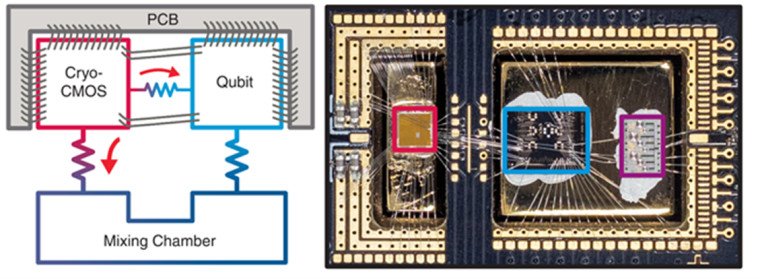Quantum computers are the most powerful computers we can come up with for now. They can solve our problems at a rate that is impossible to achieve with our classic computers. But we still struggle to build one they are so tedious and fragile that even a little change in their environment can break the whole system. The problem here is with their contemporary qubits. Quantum computers rely on the superposition principle but due to the sensitivity of qubits, it’s very hard to maintain superpositions.
That’s why researchers have been working on those qubits to make them more resilient to the change in their environment. One of the ways to maintain superposition is to keep those qubits in a cryogenic environment at a temperature close to absolute zero. But this thing limits the number of places where we can use Quantum Computers.
Recently Microsoft in collaboration with a team from the University of Sydney presented this cryogenic quantum controlled platform, this platform uses special CMOS circuits these circuits prevent qubits from decoherence. Researchers presented this chip named “Gooseberry” this is a CMOS chip that takes digital input and in return generates parallelly controllable qubit signals. This also scales up for the support of thousands of qubits. This whole research is a leap in technology.
This whole thing is possible because Gooseberry operates at 100mK while managing to dissipate a very low amount of heat so the system remains at a constant temperature and qubits don’t get themselves up. This is helpful because after this you can afford to run a quantum computer with a commercially available quantum computing refrigerator. The team wants to create a general-purpose cryo computer core that is novel and easily available.

Now the setup used in this chip uses a special kind of qubits called topological qubits this type of qubits is more robust and hence resilient to decoherence. Chip has inbuilt hardware-level error protection to prevent the need for software-level correction. The main part of the chip here is the classical-quantum interface this is where everything happens and then comes the quantum plane which contains topological qubits this plane sits at the lower part of the chip because of cryogenic requirements it has to be thermally isolated from the system.

The way Gooseberry chip works is that it takes classical instructions in the cryo computer core and converts them to voltage signals which then are sent to qubits. When put together they form a system and also manages to maintain the cold environment because of the thermal isolation of both which is still a challenge for commercial-scale systems.
They tested Gooseberry on a GaAs-based quantum dot (QD) device. The results were the same as they expected the temperature remained lower than 100mK when they powered the chip within the necessary frequencies and clock speeds. They also said that this proposed core can only handle very little data and trigger some manipulation, and freedom of temperature gives more room to technology and ideas to work with.

3 Comments
Pingback: Australia’s New Laws: Will Bing Replace Google? - Craffic
Pingback: Intel File Lawsuit Against Ex-Employee Who Stole 3900 Confidential Files - Craffic
Pingback: Startup Q-Ctrl is developing quantum sensors for space applications - Craffic